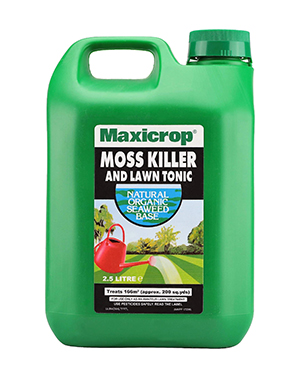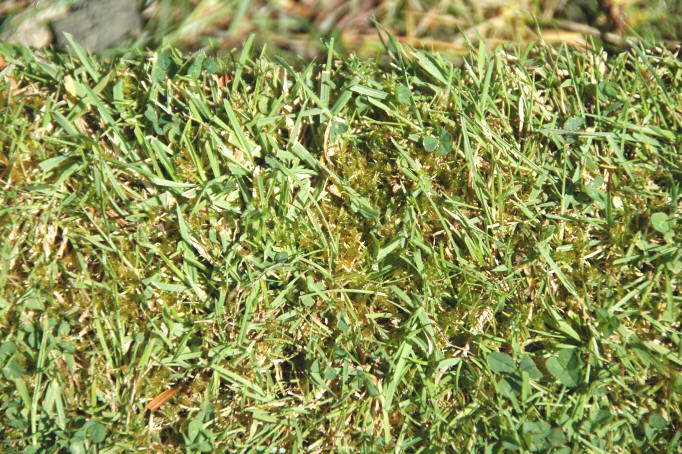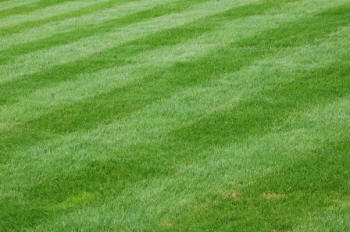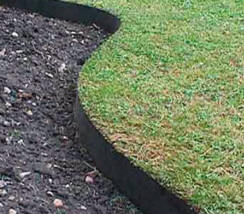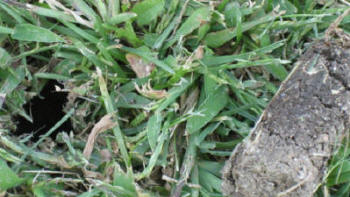Moss in Lawns is probably one of the least understood of all grass lawn problems. Treating or killing the moss is not the answer. Moss is a sign that something is basically wrong with your lawn. Too often, gardeners attempt to kill moss in lawns without tackling the problem that actually causes it. They are helped to this decision by the huge range of 'moss killers' and Lawn Moss Treatment available at local garden centres.
There are two basic lawn moss killers for lawns that are available - Ferrous Sulphate and Dichlorophen. One or the other is usually incorporated into typical lawns Feed and Lawn Moss killer combinations.
The causes of moss growth can be one of the following or a combination of.
- Waterlogging Problem - in winter or summer.
- Poor Lawn Feeding regime - usually denoted by light green grass.
- Carry out a test for Acid soil.
- Shaded Lawns - overhanging trees or large shrubs.
- Mowing lawns too close (too short) - a common cause, for it weakens the grass - allowing moss to take hold
- Drought - if severe enough to harm or kill the grass. Not to be confused with a bit of summer-browning
- Sandy free-draining soils. This can weaken the grass and allow moss to take over. Some mosses are quite happy in these conditions.
- Compaction of your Lawn - continued use by children and pets with no remedial attention by way of Lawn Aeration in the Autumn.
It may not be apparent which one causes moss growth, but if you do have an idea, autumn is the right time to tackle these issues.
Or you can opt for a quick fix, Moss Killer, it is cheap and easy enough to apply. You can purchase some moss killer treatment, it will kill your moss for 12 months, unfortunately it will probably return.
There are a lot of Moss Killers on the market, which ever one you choose, it must contain Ferrous Sulphate and / or Dichlorophen, which they all probably do.
For this exercise I use a sole purpose moss killer, not the 3 in 1 or 4 in 1's, as this is a step of a process to a better lawn.
How To Kill Moss growing in your Lawn.
- Firstly, prepare your lawn, rake it through, removing all of the surface leaves and debris.
- Mow your lawn to a short cut, exposing the lawn moss.
- Spread your moss pellets thoroughly or by using a spreader. (If you use a soluable moss killer, follow the strengths and directions on the bottle
- Finally, Water thoroughly
There are a few
Organic Methods to Kill Moss
, non of them have I tried personally, but here is the likely Organic recipes.Ingredients - One Litre of household Vinegar, 125 ml of household Salt, 50 ml of Washing up Liquid
Tools - Spear & Jackson Pump Action Pressure Sprayer, 5 L (or similar), Saucepan
- Put 125 ml of household salt into a saucepan, add 125 ml of water, gently heat on the cooker until the salt has dissolved into a soluble liquid
- Remove from the heat and rest until cool
- Add one litre of household vinegar and 50 ml of washing up liquid, stir to mix.
- Add the solution to a spray bottle and pressurise
- Spray the moss infected area generously (Do not spray on a windy day)
Within 2 weeks the moss should turn yellow and die.
After applYing a solution / course of moss killer, please leave your grass alone for 2 weeks to allow it to work through your lawn system.
